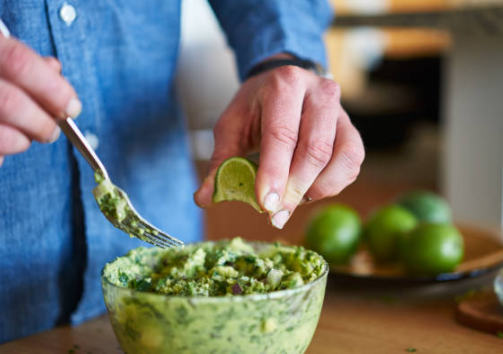We’ve all been there—you toss leftover guacamole in the fridge, only to find it’s turned brown the next time you open the container. But is it still safe to eat? And how long can guacamole actually last in the fridge?
Whether you’re scooping store-bought guac over nachos or dipping chips into your homemade favorite, these tips can help you keep guacamole fresh for as long as possible.

How Long Does Opened Guacamole Last?
Guacamole doesn’t have a long shelf life:
-
Store-bought guacamole typically stays fresh for up to 3 days in the fridge after opening.
-
Homemade guacamole, which lacks preservatives, is best consumed within 1–2 days.
-
Even preservative-free store-bought varieties follow the same short timeline—check the “use-by” date and storage instructions carefully.
Want it to last longer?
If you freeze guacamole right after buying or making it, it can stay good in the freezer for up to 4 months.
How to Store Guacamole to Maximize Freshness
Guacamole should always be stored in an airtight container in the refrigerator. According to food safety expert Dominguez, the ideal fridge temperature is 40°F (4°C) or lower, which helps slow the growth of harmful bacteria.
Even after a few days in the fridge, guacamole retains most of its healthy fats, fiber, vitamins, and minerals, making it a nutritious snack or topping.
Key tip for homemade guac:
Minimize exposure to oxygen, which causes browning. Here’s how:
-
Press plastic wrap directly onto the surface of the guacamole, making sure there are no air pockets.
-
Seal the container tightly with a lid and refrigerate.
-
Always refrigerate within 2 hours of making it to prevent bacterial growth.
-
Label the container with the date so you don’t forget how long it’s been in the fridge.
-
Avoid double-dipping chips or using dirty utensils to prevent contamination.
Is Brown Guacamole Safe to Eat?
Noticed your guacamole turning brown? Don’t panic. It’s usually still safe to eat.
That discoloration is a natural chemical reaction—when the avocado is exposed to oxygen, it oxidizes (just like a sliced apple), turning brown over time. This doesn’t affect taste or nutrition, but it can make it look less appealing.
As long as the guacamole has been stored properly and doesn’t show signs of spoilage (see below), it’s generally fine to eat. If you prefer, you can simply scrape off the top browned layer and enjoy the green guac underneath.
How to Prevent Guacamole from Turning Brown
While browned guacamole is still safe, it may not be appetizing. If you’re prepping a big batch ahead of time, here are some proven tricks to delay browning—and one that doesn’t work:
✅ DO:
-
Seal the surface: Keep air out by pressing plastic wrap directly on top of the guacamole before sealing the container.
-
Add acid: A thin layer of lime or lemon juice on top helps slow oxidation.
-
Block out light: Use an opaque container, or wrap clear containers in foil or cloth to minimize light exposure, which can speed up browning.
❌ DON’T:
-
Put the avocado pit in the guacamole. It only protects the small area it touches—not the entire batch.
Signs That Guacamole Has Gone Bad
Even properly stored guacamole can go bad. Here’s what to watch for:
-
Visible mold (white, pink, or fuzzy spots)
-
A sour or rotten smell
-
Slimy or watery texture
-
Guacamole that has turned completely brown, gray, or black
-
Pools of brown liquid on top, indicating separation
By following these storage and safety tips, you can enjoy fresh-tasting guacamole a little longer—whether homemade or store-bought.